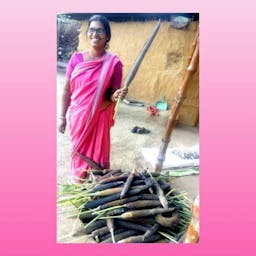Malnutrition and its Solution
Jan 21, 2015
Story
There is an interesting hiatus between the perceptions of tribal women and the NGOs regarding the problem of child malnutrition in Madhya Pradesh state in India. While Chato, a Sahariya tribal woman, emphatically states that the lack of land, means of livelihood, electricity and medical facilities are the main barriers to keeping her children alive the NGOs are more concerned about the improper functioning and lack of universalisation of supplementary child nutrition services. Thus while the poor women have hit upon the correct analysis that the lasting solution to the problem of malnutrition is in providing adequate and sustainable livelihood opportunities the NGOs campaigning for an end to malnutrition on the other hand are more concerned with trying to improve the quality of the superficial bandage services being provided by the State. Plants need water at their roots and not on their leaves. The crisis of malnutrition is there among all the poor and Madhya Pradesh is the state with the most number of hungry people in India. However, the children owing to their lower immunity are more prone to die than their elders are.
The truth is that devastation of livelihoods in Madhya Pradesh has taken place due to the adoption of wrong agricultural policies over the past forty years or so. The introduction of the cultivation of soyabean in the monsoon season has led to the gradual vanishing of such nutritious crops as jowar, bajra, makka, udad, tuar, moong and groundnut. Simultaneously in the winter season only wheat is sown and the area under gram has been going down. Thus while earlier the poor small farmers used to get nutritious food from their farms they now have to purchase food from the market at exorbitant prices. Moreover while agriculture was a profitable enterprise earlier because of subsidies provided for power and fertilizer now it has become a loss-making proposition due to the withdrawal of subsidies. The problem has been aggravated over time by the fragmentation of land with the increase in population. This has meant that there are now more landless labourers like Chato who get less work and less remuneration and so are in even greater trouble than small landholders.
The Government and the NGOs do not seem to be aware of this fundamental problem of the unsustainability of agriculture. They have also ignored the severe patriarchal oppression that most poor women suffer that makes them work hard on little food and suffer from reproductive health problems in silence apart from bearing a number of children due to male preference. Women's status has been further compromised with the introduction of cash crops as they have lost control over agriculture and the crops that used to be produced for home consumption. Now all the money from the sale of the cash crops is in the control of men who frequently fritter it away in consumption of alcohol or in gambling. Consequently mothers are anaemic with haemoglobin count of 7 or 8 gms per deciliter. Thus, the solution to the secondary problem of malnutrition, not only of children but of adults also, is to first tackle the primary problems of the unsustainability of agriculture and prevalence of severe patriarchal oppression.




